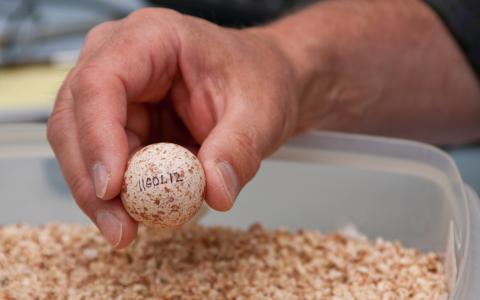The Northern Aplomado Falcon (Falco femoralis septentrionalis), a colorful mid-sized falcon, once ranged from northern Guatemala to the southern United States but vanished in the U.S. by the early 1950s. While there is no definitive explanation for their disappearance, many attribute it to a combination of habitat loss and contaminants. Following the listing of the Aplomado Falcon in 1986, the U.S. Fish & Wildlife Service invited The Peregrine Fund to lead the recovery efforts, a project we have been pursuing since 1987.
Our team recently banded the 600th wild Aplomado Falcon and observed 26 pairs during monitoring activity in South Texas. It has taken over 30 years of adaptive management to reach this point, and we still have a ways to go until the Aplomado Falcon will be considered stable again in the United States and northern Mexico.
Our Solutions

Cal Sandfort
















